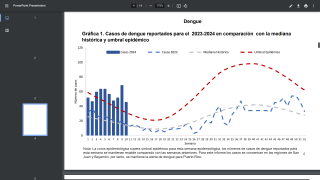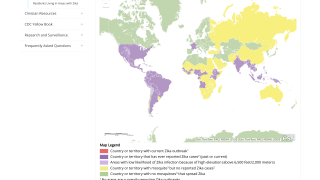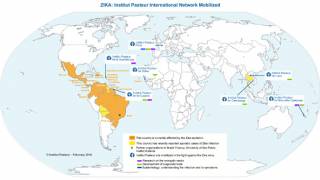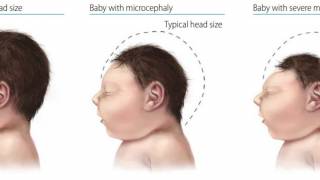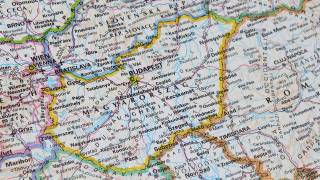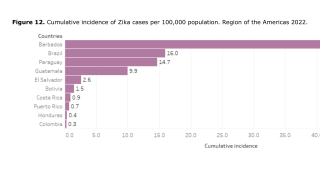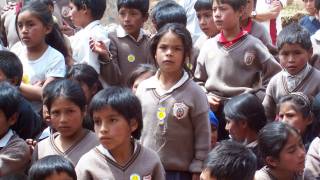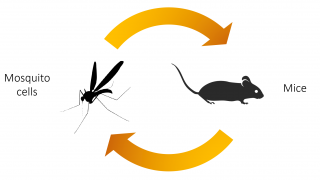Scientist Predicted France’s Locally-Acquired Zika Cases

Several attempts have been made to predict the transmission of the Zika virus at a global and local level.
But, the spatial and temporal patterns of transmission are still not well understood, said German researchers in a new study published on November 7, 2019.
These scientists from Goethe University and Senckenberg Society for Nature Research in Frankfurt, Germany are developing innovative maps on where the risk of Zika virus infection is the greatest in South America.
The results of their efforts have been published in the scientific journal “PeerJ”. Based on the models for South America, they intend to use the method to determine the Zika risk in Europe as well.
In most cases, mosquitoes of the genus Aedes transmit the Zika virus to humans. Primary vectors are the Yellow Fever mosquito (Aedes aegypti) and the Asian tiger mosquito (Aedes albopictus).
Both mosquito species are widespread in South America. Whereas the yellow fever mosquito (Aedes albopictus) is nearly absent in Europe, the Asian tiger mosquito is widespread in the Mediterranean region.
“With our new modeling approaches we can illustrate the risk areas for Zika infections in Latin America,” said Sven Klimpel, Ph.D., Professor for Parasitology and Infection Biology at Goethe University and the Senckenberg Biodiversity and Climate Research Centre.
“The models additionally allow us to illustrate Zika risk areas for Europe.”
“For example, our models indicate autochthonous cases in southern France in Département Var," said Dr. Klimpel.
At the end of October, French authorities announced 3 Zika cases in the Hyeres City area of France.
The Europian Centers for Disease Control (ECDC) said in a related statement, ‘to their knowledge, this event was the 1st report of vector-borne transmission of Zika virus disease by Aedes albopictus mosquitoes in Europe.’
Previously, the ECDC reported 6 Zika cases related to international travelers in France during 2019.
According to the German researcher’s calculations, the Zika infection risk in South America is highest along the Brazilian East Coast and in Central America.
And the risk is moderate in the Amazon region and lowest in the southern areas of the continent.
The following countries are especially affected according to this model: Brazil, Columbia, Cuba, the Dominican Republic, El Salvador, Guatemala, Haiti, Honduras, Jamaica, Mexico, Puerto Rico, and Venezuela.
In Europe, a risk of infection exists mainly in the Mediterranean region, but also in the inland regions of France and in the Rhine areas of Baden-Württemberg.
To determine the infection risk of a specific area, Dr. Sarah Cunze and Professor Sven Klimpel modeled the potential spread of the 2 aforementioned mosquito species.
Since the mosquitoes can only transmit the Zika virus in regions where the virus is present in the first place, the researchers included an Evidence Consensus Map in their risk model.
This map categorizes the number of reported Zika illnesses at the regional level.
The average temperature of the warmest quarter was also incorporated in the model since the temperature has a significant influence on whether the virus can survive and multiply in the mosquito.
Finally, the Goethe University scientists added socioeconomic factors such as population density and gross domestic product to their risk model.
The final model of the Zika virus transmission risk is based on known occurrences of the disease taken from Messina et al. (2016) and Messina & Shearer (2016) and the following predictor variables:
- Habitat suitability maps of the two main vector species, Ae. albopictus and Ae. aegypti
- The temperature of the warmest quarter
- Evidence Consensus Map (ECM) for Zika (cf. Brady et al., 2012)
- ECM for dengue (with the same vector species as Zika)
- Population density
- Gross domestic product per capita (on a country level)
Mapping the geographical distribution of diseases and identifying potential areas under risk of infections is crucial for evidence-based decision making in public health.
Hopefully, this mapping model will be applied to North America soon.
The states of California and Florida continue to report travel-related Zika cases in 2019.
- November 3, 2019 – According to the State of California reported (30) travel-related Zika cases during 2019.
- October 9, 2019 – The State of Florida Health Department’s weekly arbovirus surveillance report says 23 pregnant women are being monitored for Travel-Associated Zika Fever Cases in 2019. And, there are 36 travel-associated cases in individuals with travel history to Brazil, Colombia (1), Cuba (6), Guatemala (5), Haiti (11), Honduras (4), Jamaica, Nicaragua, Philippines, Puerto Rico, and Venezuela (3).
To alert international travelers of their Zika risks while visiting Zika endemic countries, the US Centers for Disease Control and Prevention (CDC) released guidance in 2016 for the prevention of sexual transmission of Zika virus for pregnant women and couples planning to conceive.
During February 2019, the CDC said ‘we do not have accurate information on the current level of risk in specific areas. The large outbreak in the USA is over, but Zika is and will continue to be a potential risk in many countries in the Americas and around the world.’
Both the CDC and World Health Organization advise pregnant women, and those planning to conceive a child, refrain from visiting Zika-endemic countries, such as Cuba and Haiti.
This is important information since the Zika virus has been found to negatively impact the health of an unborn child.
A recent study found pregnant women who become infected with Zika early in pregnancy were 17 times more likely to deliver a baby suffering from a rare neurological condition called Microcephaly, and other negative health conditions.
Unfortunately, there are no vaccines to prevent or medicines to treat the Zika virus today, says the CDC.
Various Zika vaccine candidates, such as Takeda's TAK-426, remain in clinical studies.
‘In response to the emergence and global spread of ZIKV infections and associated complications, public health systems need to be strengthened and should include epidemiological surveillance,’ concluded these researchers.
The study authors declare that they have no competing interests. This study was supported by the Uniscientia Stiftung, the LOEWE-Centre TBG funded by the Hessen State Ministry of Higher Education, Research, and the Arts.
Zika virus news is published by Zika News.
Our Trust Standards: Medical Advisory Committee









